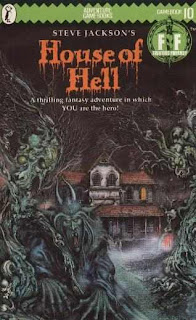This is why I have so much love for random character generation. The players don't need to know the rules, they just pick up the dice, make a handful of narrow choices, and 20 minutes later they have a character ready to play. No skill points to allocate, no building a character with high level play in mind, no min-maxing. WFRP1e is brilliant in this regard. Despite being a skill-based game, these skills are all determined by random rolls and a randomly determined profession. The player doesn't need to know how skills work mechanically, they just roll up a character. And what WFRP1e has over the vast majority of D&D[-alikes] is that these randomly determined professions also determine a character's starting equipment; his trappings. Even classic D&D character generation slows down, with new players, at least, when the starting money is rolled and the equipment lists are brought onto the table.
Random character generation can combine the oracular power of the dice with a rapid entry into adventure.
Random character generation can combine the oracular power of the dice with a rapid entry into adventure.
When I write my fantasy heartbreaker - and I am writing it; a version of OpenQuest/Renaissance with the flavours of WFRP1e and Titan, current working title Hammerstein! - it will have a random character generation system that can get a player into adventure in 20 minutes. Don't hold your breath for Hammerstein! But when I do finish writing it, you might be (just) able to hold your breath while a new player generates a starting character.










.png)





























































